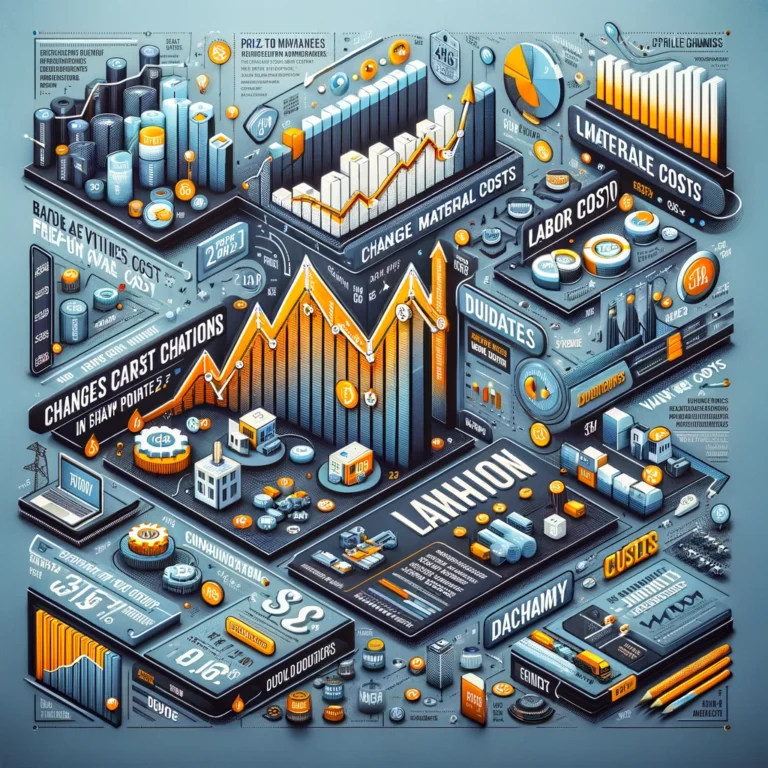- Level of demand may change.
- Reducing prices to increase demand may at fist be effective, but it is unsustainable.
- Profit depends on the level of risk involved.
- Innovation and the introduction of new technologies can easily affect break-even.
- Luck.
Understanding the dynamics behind changes in the break-even point is crucial for businesses aiming to manage their finances effectively. The break-even point, the juncture at which total revenues equal total costs, is influenced by various factors, ranging from market demand to technological innovations. This analysis delves into the causes of changes in the break-even point, complemented by industry examples to offer insights pertinent to IB Business & Management Study.
Causes for Changes in Break-even Point
Level of Demand
Explanation: The demand for a product or service directly affects a company’s sales volume, impacting its break-even point. An increase in demand allows a company to reach its break-even point sooner, while a decrease in demand pushes the break-even point further out, requiring higher sales to cover costs.
Industry Example: During the COVID-19 pandemic, the demand for travel and tourism services plummeted. Airlines and hotels faced significantly higher break-even points due to lower occupancy rates and flights, necessitating drastic cost-cutting measures and operational adjustments to align with the reduced demand.
Pricing Strategies
Explanation: Adjusting prices to influence demand is a common strategy. Initially, reducing prices may boost demand and sales volume, potentially lowering the break-even point. However, this strategy might be unsustainable if it excessively erodes profit margins or if the price reduction fails to stimulate additional demand.
Industry Example: Streaming services, like Netflix, occasionally adjust subscription prices to balance demand growth with revenue needs. While lower prices may attract more subscribers, thereby potentially lowering the break-even point, they must ensure that the reduced price still covers content acquisition and operational costs.
Risk Levels
Explanation: The level of risk associated with a business venture can influence profit expectations and, consequently, the break-even point. Higher-risk ventures often require higher returns to justify the investment, affecting pricing, cost management, and sales volume needed to break even.
Industry Example: Biotechnology firms investing in new drug development face high levels of risk due to regulatory approval processes and market acceptance uncertainties. These firms often need substantial revenue from successful products to cover the high costs of research and development, affecting their break-even analysis.
Innovation and New Technologies
Explanation: Innovation and the adoption of new technologies can significantly impact operational efficiencies, cost structures, and product offerings, thereby affecting the break-even point. Innovations can reduce production costs or open new revenue streams, altering the break-even dynamics.
Industry Example: Tesla’s investment in battery technology and manufacturing efficiency not only reduced the costs of producing electric vehicles but also enabled the company to price its products competitively. This innovation has a profound impact on Tesla’s break-even point by lowering production costs and potentially increasing demand through competitive pricing.
Luck
Explanation: External factors beyond the control of the business, often referred to as “luck,” can impact the break-even point. These might include unexpected shifts in consumer behavior, geopolitical events, or natural disasters.
Industry Example: Agricultural businesses are particularly susceptible to weather conditions. A favorable growing season can result in higher crop yields, reducing the break-even point for farmers through increased production volumes. Conversely, adverse weather can increase the break-even point by reducing yields and increasing costs.
Conclusion
The break-even point is a dynamic metric influenced by various internal and external factors, including demand levels, pricing strategies, risk considerations, innovation, and even luck. Understanding these factors is essential for businesses to navigate the complexities of financial planning and operational management effectively. The examples from the travel and tourism, streaming services, biotechnology, automotive, and agricultural sectors illustrate the multifaceted nature of these influences. For IB Business & Management students, comprehending the intricacies behind changes in the break-even point is crucial for applying financial concepts to real-world business scenarios, enabling them to make informed decisions in their future careers.






